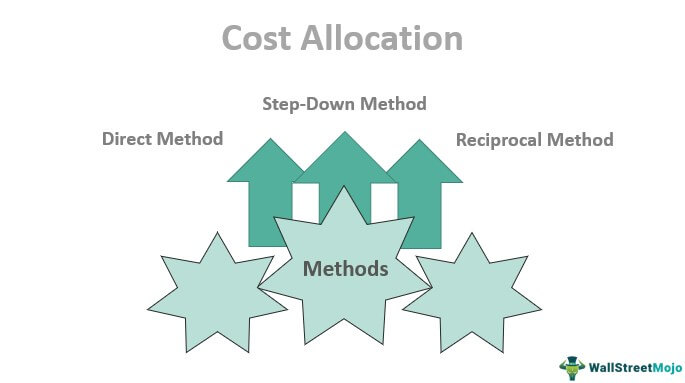Solving the Teaching Difficulties and Pain Points of Auxiliary Production Cost Allocation Methods with Interdisciplinary Thinking
Main Article Content
Abstract
The methods for allocating auxiliary production expenses are a significant challenge in teaching cost accounting courses. The principal allocation methods comprise direct allocation, reciprocal allocation, sequential allocation, planned allocation, and algebraic allocation. Both educators and learners frequently experience confusion regarding the multitude of approaches and their interrelations. This study seeks to resolve these inquiries by employing multidisciplinary approaches and methodology from economics, management, political science, and mathematics. It aims to improve the efficacy of classroom instruction regarding auxiliary production cost allocation methods and investigate the significance of interdisciplinary thinking in accounting education. The study asserts that the direct allocation method exemplifies the rational-agent paradigm from economics, the reciprocal allocation method embodies egalitarian principles from management studies, the sequential allocation method integrates an efficiency-driven perspective from political science, the planned allocation method corresponds with performance-oriented reasoning from political science, and the algebraic allocation method employs identity-based logic from mathematics. This research contributes by integrating interdisciplinary thinking into accounting education. Educators and learners not only investigate the profound implications of diverse methodologies and their interrelations but also expand and refine their interdisciplinary viewpoints. This improves instructional efficacy—facilitating instruction for educators and enhancing enjoyment for learners—while fostering the sophisticated, inventive, and rigorous character of university courses4.
Downloads
Article Details
Issue
Section

This work is licensed under a Creative Commons Attribution-NonCommercial-NoDerivatives 4.0 International License.
References
Adam Smith. The Wealth of Nations [M]. Translated by Guo Dali, Wang Yanan. Shanghai:Shanghai Sanlian Publishing House, 2009: 11.
Brassler, M.(2017). How to Enhance Interdisciplinary Competence-Interdisciplinary Problem-Based Learning versus Interdisciplinary Project-Based Learning[J]. Interdisciplinary Journal of Problem-Based Learning,2017,11(2):12.
Chen, S.S., (2025). Interdisciplinary Thinking Among Seventh-grade Students In Lower-secondary Science Education [J]. BALTIC SCIENCE EDUCATION, 2025(24): 53- 70.
Chen, H.,&Ding, Y. (2024). Value - Oriented Medical Cost Management - Application of the Time - Driven Activity - Based Costing [J]. Finance and Accounting Monthly, 2024, 45(12): 10 - 14.
Chunhua, G. (2016). Selective Exploration of Methods of Allocating Ancillary Production Costs [J]. Modern Accounting, 2016(2).
Fang, Z.L., (2021). An Investigation into Methods for Allocating Auxiliary Production Costs [J]. Agricultural Accounting in China . 2021.
Guan, Y. (2004). The Reciprocal Allocation Method of Auxiliary Production Costs Needs to Be Improved [J]. Finance and Accounting Monthly, 2004, (02): 27.
Jia, X. (2014). Improvement of the Reciprocal Allocation Method under the "Enterprise Product Cost Accounting System (Trial)" [J]. Friends of Accounting, 2014, (22): 34 - 35.
Jiang, Q., Zhu, X.,&Qi, F. (2016). Time - Driven Activity - Based Costing and Its Application in Public Hospitals [J]. Finance and Accounting Monthly, 2016, (08): 44 - 47.
Lattuca, L. R., Knight, D. B., Ro, H. K., & Novoselich, B. J. (2017). Supporting the development of engineers’ interdisciplinary competence. Journal of Engineering Education, 106(1), 71–97. https://doi.org/10.1002/jee.20155
Mansilla, V. B., Lamont, M, (2016). Shared Cognitive Emotional-Interactional Platforms: Markers and Conditions for Successful Interdisciplinary Collaborations[J].Science Technology&Human Values,2016,41(4):571~612.
Ministry of Education. Implementation Opinions on the Construction of First - Class Undergraduate Courses [J]. Bulletin of the Ministry of Education of the People's Republic of China, 2019, (10): 45 - 50.
Newell, W. H. (2007). Decision making in interdisciplinary studies. In G. Morçöl (Ed.), Handbook of decision making. New York: CRC.
Newell, W. H. (2009). Interdisciplinarity in undergraduate general education. In R. Frodeman, J. T. Klein & C. Mitcham (Eds.), The Oxford handbook on interdisciplinarity. Oxford: Oxford University Press.
Si, Y., &Zhu, X. (2007). On the Step - Down Allocation Method of Auxiliary Production Costs in Western Countries [J]. Finance and Accounting Monthly, 2007, (27): 52 - 53.
Spelt, E. J. H., Luning, P. A., van Boekel, M. A. J. S., & Mulder, M. (2017). A multidimensional approach to examine student interdisciplinary learning in science and engineering in higher education. European Journal of Engineering Education, 42(6), 761–774.
Spelt, E. J., Biemans, H. J. (2009). Teaching and learning in interdisciplinary higher education:A systematic review[J].Educational Psychology Review,2009,(21):365~378.
Tripp, B., & Shortlidge, E. E. (2020). From theory to practice: Gathering evidence for the validity of data collected with the interdisciplinary science rubric (IDSR). CBE–Life Sciences Education, 19(3), Article ar33.
Tu, Y. (2006). Improvement of the Algebraic Allocation Method for Allocating Auxiliary Production Costs [J]. Finance and Accounting Monthly, 2006, (34): 56.
Wang, D. (2015). Problems Existing in the Traditional Algebraic Allocation Method and Their Improvements [J]. Finance and Accounting Monthly, 2015, (31): 90 - 93.
Wang, Y. (2004). Analysis of the General Model for Allocating Auxiliary Production Costs [J]. Communication of Finance and Accounting, 2004, (22): 43 - 46.
Wei, Y. (2007). Learning from the Western Step - Down Method to Allocate Auxiliary Production Costs [J]. Finance and Accounting Monthly, 2007, (30): 53 - 54.
YASUKATA, K., YOSHIDA, E., YAMADA, I., et al. A Longitudinal Case Study of Target Cost Management Implementation at a Shipbuilding Company [J]. Journal of Accounting and Organizational Change,2013,9 (4):448-470.
Wu, Y. (2018). Building China's “Golden Courses” [J].China University Teaching, 2018, 40(12)4-9.
Yi, F. (2007). Error Analysis of Various Allocation Methods for Auxiliary Production Costs [J]. Finance and Accounting Monthly, 2007, (29): 45 - 46.
Yu, Y. (2006). Research on the Practical Application of the Algebraic Allocation Method for Auxiliary Production Costs [J]. Friends of Accounting, 2006, (05): 58 - 59.
Zhan, Z. (2015). Details of the Sequential Allocation Method's Sorting Method and Its Accounting Treatment [J]. Finance and Accounting Monthly, 2015, (22): 109 - 111.
Zhang, Z. (2005). Defects and Improvements of Traditional Allocation Methods for Auxiliary Production Costs - Also on the Application of Activity - Based Costing [J]. Communication of Finance and Accounting, 2005, (11): 49 - 51.

